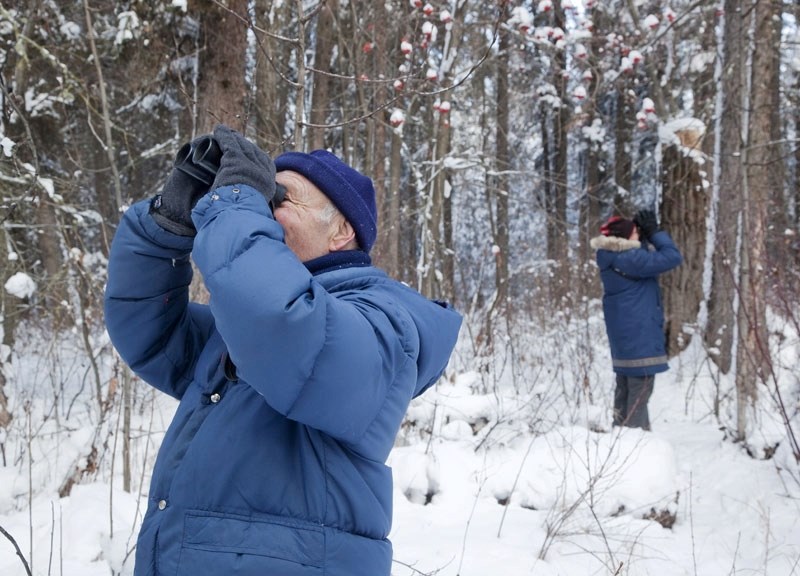A dashing hawk and a grey card player were just two of the many rare birds spotted last month during St. Albert’s annual bird count.
Count co-ordinator Alan Hingston released the results of the 20th annual St. Albert Christmas Bird Count this week. The count, held last Dec. 27, had some 153 people beating bushes and watching feeders in search of birds for science.
Counters enumerated some 7,580 birds during the event, Hingston says, up from last year’s 5,232. As usual, the difference was mostly due to a dollop of Bohemian waxwings — some 2,700 dropped by this winter, compared to just 300 in 2009.
Watchers identified some 33 different species of bird, he continues, none of which were new. One species that was new, the Eurasian collared dove, was spotted in the city shortly before count day.
Counters did manage to spot seven northern goshawks — a record number, Hingston notes. These long-tailed, round-winged raptors are known for their smash-and-grab tactics, he says, and often charge out of forests to snatch unwary ducks. “They’re normally an open country bird, but they seem to be coming into the edge of the city.”
One lucky watcher in Kingswood spotted a Townsend’s solitaire at a feeder, he continues. This long-tailed grey bird is about the size of a robin, according to the Cornell Lab of Ornithology, and snacks on juniper berries. It’s the third year that this bird has been spotted in the count.
Other birds were conspicuously absent. There were no pine grosbeaks, for example (a big, occasionally red finch spotted during the previous 19 counts), and just two snowy owls. Grey partridges and ruffled grouse were also uncommon; these birds have to dig down to reach food, Hingston notes, so they may have been repelled by the city’s deep snow.
The house finch, with its rosy red head and streaky brown back, continued its slow conquest of St. Albert, according to organizers. An introduced species, the bird was first spotted in 2006 and has grown in number ever since. “They started in Lacombe and they seem to grow each year.”
Hingston thanked the city and its volunteers for supporting the count. The count results will be forwarded to Bird Studies Canada.
Songbirds have evolved new tunes to make themselves heard in the big city, suggests a new study.
A study by researcher Dominique Potvin published last week in the Proceedings of the Royal Society B found that birds, specifically silvereyes, sang higher-pitched, slower-paced songs in the city compared to the country. Silvereyes are small grey birds with a white ring around their eyes.
Previous studies have found that some birds sing at higher frequencies in the city than in the country, says Potvin, a graduate student at the University of Melbourne, Australia, but were not able to tell if those changes were true for all cities due to the small sample area.
Potvin’s study examined 81 silvereyes in and around seven Australian cities, comparing their songs and calls in rural and urban regions. (Songs are learned and used for mating; calls are instinctual and used for warning.)
The study found that city birds consistently sang about 195 hertz higher than country ones and called about 90 Hz higher. They also sang fewer syllables per second.
City background noise hovers around one to four kilohertz, Potvin says, so the birds may be singing at a higher pitch to avoid masking. (Silvereyes sing in the two to six kHz range.) The birds may be singing more slowly to compensate for building-induced echoes. “If you think about people, we do this too — we slow down our speech to be better understood in noisy areas.”
This study suggests that birds do indeed change their tune when they move to the city, according to Potvin. This change may be may be genetic, rather than learned, as it also affects calls.
This could affect breeding habits, Potvin says, and eventually cause city and country birds to become separate species. “We might be seeing the beginning of speciation in cities — a major consequence of human-generated noise.”




